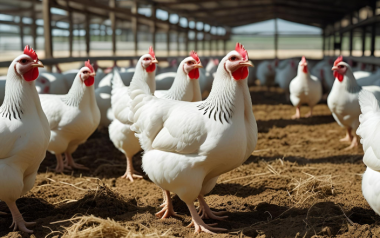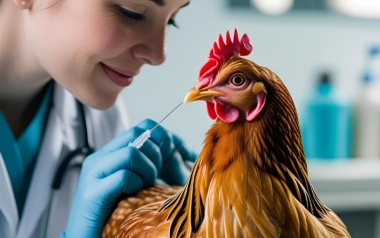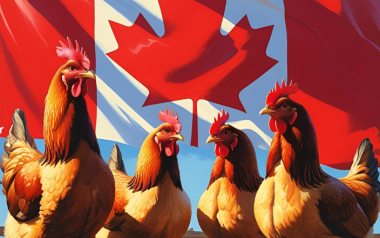Clinical signs, severity of disease, and mortality rates of avian influenza vary, depending on the Avian Influenza virus strain and the host species. Some of the symptoms in birds include:
22 Jan 2024
Increase of Avian Influenza Outbreaks in the World
For this year, the OMSA forecasts a new avian influenza crisis in 2024 and it is expected to be equal to or greater than 2023, in which 12.5 million birds died or had to be culled to contain the disease.
Available in other languages:
Content available at:
العربية (Arabic)
According to an increse of Avian Influenza outbreaks, the FAO called on the countries of the region to maintain a state of alert and collaborate with notification systems to better face the impact of the new avian influenza season, which is considered an “unprecedented situation” due to its evolution.
In total, 16 avian influenza virus subtypes were detected; 10 of these were highly pathogenic avian influenza (HPAI) virus subtypes identified in animals, including birds.
Categories of animals with avian influenza outbreaks included wild birds, captive birds, birds in live bird marketing markets, breeding and commercial poultry, and non-human mammals, such as minks.
Increases in geographic extent and animal category in terms of spread could be attributed to increased poultry production and trade, increased exposure to wild birds due to repeated annual migrations of infected birds, and changes in migration patterns due to climate change and land conversion for agricultural production. These increases may also better reflect avian influenza surveillance and reporting systems.
The spread of avian influenza viruses among birds, animals, and people can have significant public health consequences. As outbreaks in animals increase, spread to humans may also increase, as well as opportunities for reassortment of avian influenza viruses, which may increase their transmissibility. The most effective surveillance for avian influenza is one that includes comprehensive surveillance, including all virus subtypes, as well as timely reporting of cases in domestic and wild birds, humans and, ideally, non-human mammals, especially pigs, as pigs may play a key role in reassortment of novel influenza viruses. Efficient and sustained human-to-human transmission could result in an influenza pandemic.
Let us remember that the Avian Influenza virus is a myxovirus and there are many serotypes. The main ways of transmission are:
- Viral particles suspended in the air from the respiratory tract of infected birds.
- Saliva droplets
- Humans carrying the virus on their clothes or farm equipment.
- Drop in egg production.
- Edema of the head and neck.
- Nasal discharge.
- Sneezing.
- Coughing.
- Swollen infraorbital sinuses.
Diagnosis is made by serology or by viral isolation. Avian influenza has no treatment, although antibiotics can help prevent secondary bacterial infections and supportive care is needed.
In conclusion, we need to establish a very rigorous biosecurity plan in our poultry facilities to avoid at all costs the entry of the virus, and, if possible, to vaccinate the birds. However, vaccination is highly regulated and restricted in many countries so it should be checked if it is allowed in the region. On the other hand, zoonotic infections are rare, but have been reported in people with no apparent clinical signs, so we must always be alert.
Sources: Available under petition.









































